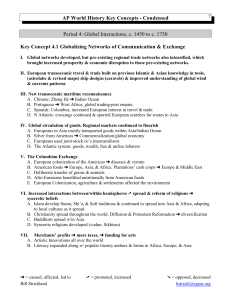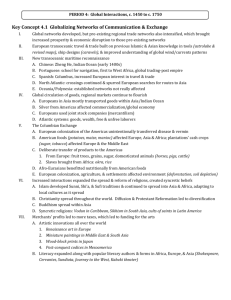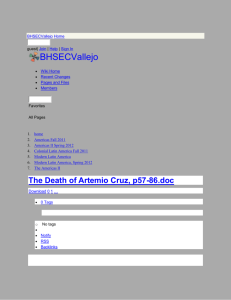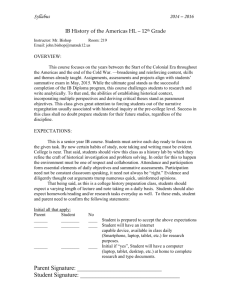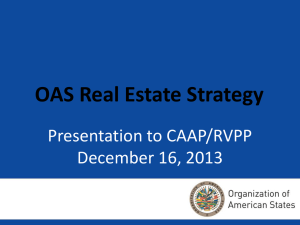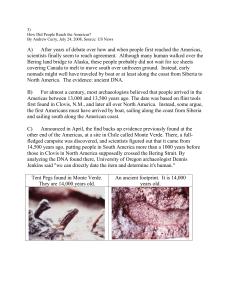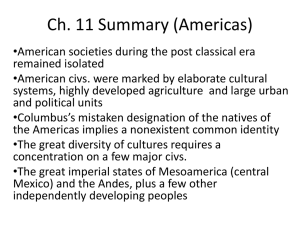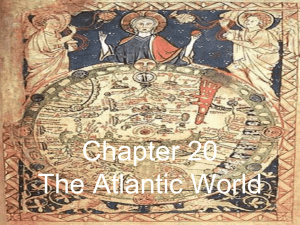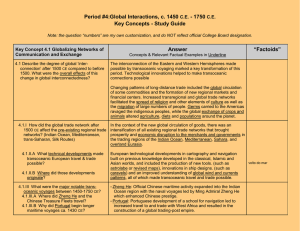WHAP Unit 4 Chapter 25 Reading Guide
advertisement
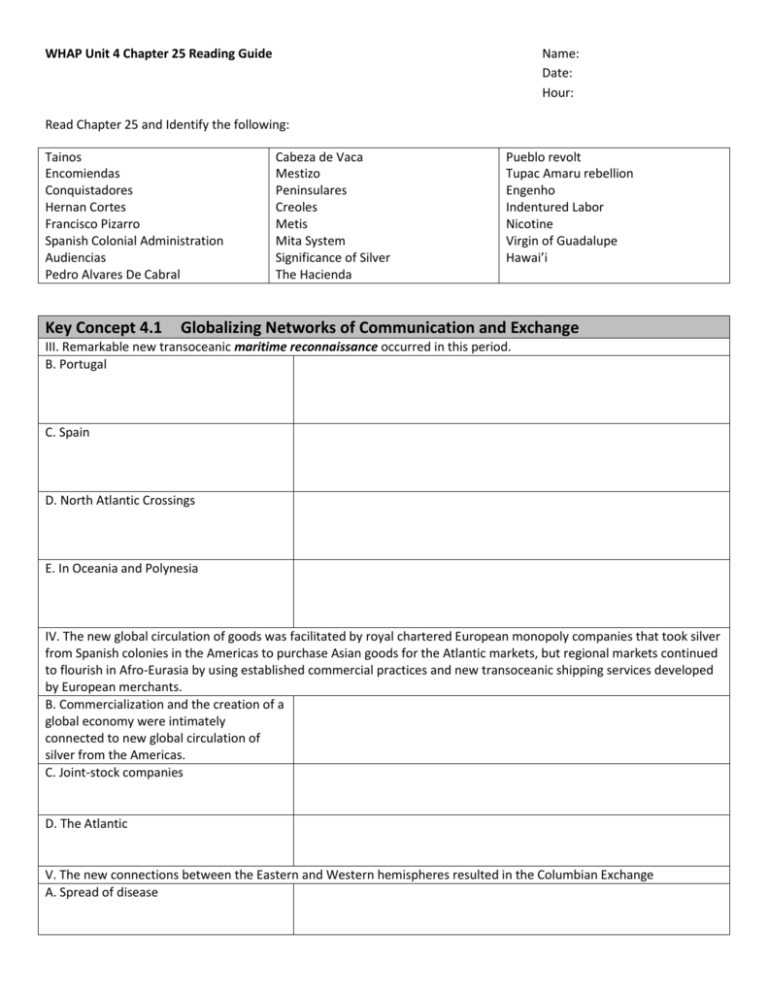
WHAP Unit 4 Chapter 25 Reading Guide Name: Date: Hour: Read Chapter 25 and Identify the following: Tainos Encomiendas Conquistadores Hernan Cortes Francisco Pizarro Spanish Colonial Administration Audiencias Pedro Alvares De Cabral Key Concept 4.1 Cabeza de Vaca Mestizo Peninsulares Creoles Metis Mita System Significance of Silver The Hacienda Pueblo revolt Tupac Amaru rebellion Engenho Indentured Labor Nicotine Virgin of Guadalupe Hawai’i Globalizing Networks of Communication and Exchange III. Remarkable new transoceanic maritime reconnaissance occurred in this period. B. Portugal C. Spain D. North Atlantic Crossings E. In Oceania and Polynesia IV. The new global circulation of goods was facilitated by royal chartered European monopoly companies that took silver from Spanish colonies in the Americas to purchase Asian goods for the Atlantic markets, but regional markets continued to flourish in Afro-Eurasia by using established commercial practices and new transoceanic shipping services developed by European merchants. B. Commercialization and the creation of a global economy were intimately connected to new global circulation of silver from the Americas. C. Joint-stock companies D. The Atlantic V. The new connections between the Eastern and Western hemispheres resulted in the Columbian Exchange A. Spread of disease E. European colonization and the introduction of European agriculture and settlements practices in the American often affected the physical environment through deforestation and soil depletion. VI. The increase in interactions between newly connected hemispheres and intensification of connections within hemispheres expanded the spread of existing religions and created syncretic belief systems and practices. B. Christianity including the Reformation D. Syncretic and new forms of religion developed. Key Concept 4.2 New Forms of Social Organization and Modes of Production I. Traditional peasant agriculture increased and changed, plantations expanded, and demand for labor increased. These changes both fed and responded to growing global demand for raw materials and finished products. A. Peasant labor intensified in many regions B. Slavery in Africa C. The growth of the plantation economy increased the demand for slaves in the Americas. D. Colonial economies in the Americas depended on a range of coerced labor. II. As new social and political elites changed, they also restructured new ethnic, racial, and gender hierarchies. A. Both imperial conquests and widening global economic opportunities contributed to the formation of new political and economic elites. B. The power of existing political and economic elites fluctuated as they confronted new challenges to their ability to affect the policies of the increasingly powerful monarchs and leaders. D. The massive demographic changes in the Americas resulted in new ethnic and racial classifications. Key Concept 4.3 State Consolidation and Imperial Expansion I. Rulers used a variety of methods to legitimize and consolidate their power. C. States treated different ethnic and religious groups in ways that utilized their economic contributions while limiting their ability to challenge the authority of the state. D. Recruitment and use of bureaucratic elites, as well as the development of military professionals, became more common among rulers who wanted to maintain centralized control over their populations and resources. II. Imperial expansion relied on the increased use of gunpowder, cannons, and armed trade to establish large empires in both hemispheres. C. European states established new maritime empires in the Americas. III. Competition over trade routes, state rivalries, and local resistance all provided significant challenges to state consolidation and expansion.
